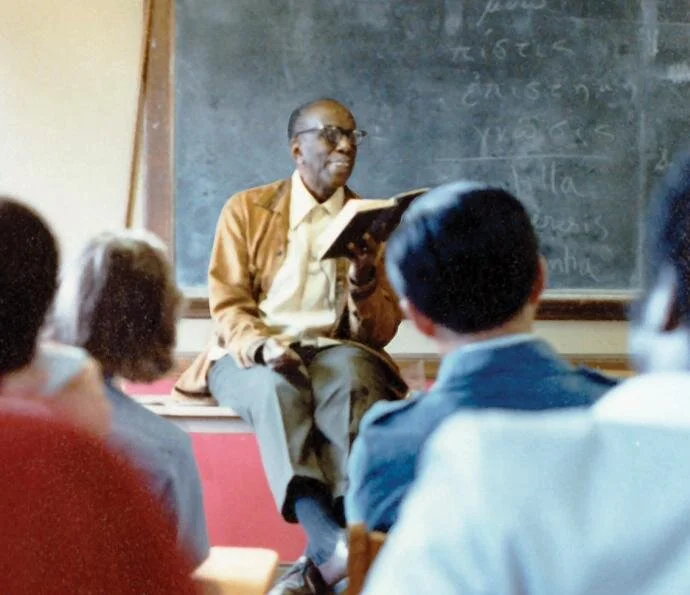Friday Reflection: Women of Action
Cornelia Connelly
The history of communities of women religious in the Roman Catholic church runs deep especially in the nineteenth century. This movement began in major American cities under rapid growth, including Philadelphia.
A center of intense development, whose first Roman Catholic parishes emerged in the late 18th century, Philadelphia drew successive groups to meet its escalating social needs. The first: Elizabeth Ann Seton’s Sisters of Charity (founded 1809 in Baltimore, merged with France’s older Daughters of Charity), came to Philadelphia in 1814 to run a home for orphans of the 1790s yellow fever epidemics. They were succeeded in 1847 by the older Sisters of St. Joseph. The Sisters of Mercy, founded in Dublin in 1831, arrived in Philadelphia in 1861 to treat the sick and teach and care for children. In 1862, an English congregation founded in 1846 by an American, the Society of the Holy Child Jesus, arrived in Pennsylvania to improve the lives of women through education. By 1867 it had established two schools in and around Philadelphia.
This last congregation (SHCJ for short) had a special vision—and an intriguing link to St. Stephen’s through its founder, Cornelia Peacock Connelly (1809-1879).
Cornelia’s path loosely resembles that of St. Elizabeth Ann (Mother) Seton’s: Both were converted Protestant married mothers. Cornelia’s, however, grew unusually thorny with time. She was born in Philadelphia to a family that worshipped at the Second Presbyterian Church. Orphaned at 16, she joined Episcopal relatives at Christ Church, then at St. Stephen’s, newly founded and led by a relation, The Rev. James Montgomery. At 22 in early 1831, she was baptized there before marrying Christ Church’s newly ordained curate, Pierce Connelly (1804-1883). They moved to Natchez, MS, where Pierce became rector at Trinity Episcopal Church and Cornelia raised their children and taught. Both began studying Roman Catholicism, then under tumultuous scrutiny with the Oxford Movement and anti-Catholic feeling. Pierce resigned in 1835 with Cornelia’s blessing. She converted that year before they traveled to Rome to argue his case for conversion, as an Episcopal priest, at the Vatican. It’s likely that St. Stephen’s early High-Church doctrines contributed to her religious growth.
Pierce’s subsequent decision to become a Roman Catholic priest, however, created problems because it required celibacy. Pope Gregory XVI approved his candidacy when in 1844 Cornelia consented to separation, living and teaching in Rome’s Sacred Heart Convent until 1845, when Pierce was ordained. When she decided she was called to found a new order dedicated to acts of mercy, she obeyed the Pope’s direction to do so in England, not in her native country, as she planned.
And need there was. English Catholicism was then in resurgence, after centuries of suppression and persecution, but lacked resources to serve its flock locally: schools at all class levels, orphanages, and services for the poor, especially new immigrants from famine-stricken Ireland.
With the support of powerful English Catholic patrons met in Rome, in 1846 Cornelia founded the Society of the Holy Child Jesus dedicated to education for girls of all social classes in industrial Derby. In the convent of St. Mary, she established and ran schools for the poor and working class (day, night, and Sunday), a boarding school for the paying privileged, and a teacher training program. Pierce soon changed direction again: He tried unsuccessfully to gain control of the Society, then left the priesthood and Catholicism. Cornelia’s refusal to return to him as he demanded, instead taking her perpetual vows of chastity and role as mother superior of the new order, escalated the struggle to a turbulent, public, and damaging chapter in which he denied her access to their three surviving children. In the process, she moved the convent school in late 1848 to St. Leonards-on-Sea in Sussex; he eventually settled in Florence as a violently anti-Catholic rector of an Episcopal church.
Cornelia’s approach to these problems, as to struggles with administrators, critics of women leaders, and a hostile, largely Protestant world, varied from quiet acceptance to “bold” confrontation. Many later saw her as holy for repeatedly sacrificing her devotion to family, a lauded woman’s virtue, in favor of the higher one of God’s repeated calls in beleaguered circumstances. Such views echoed the criteria for canonization (sainthood) of non-martyrs. In 1924, the SHCJ’s general chapter began the process of canonization on these grounds with the Cause for beatification, which graduated to opening the Cause for canonization in 1959. In 1992, Cornelia was declared “Venerable” in formal canonical terms: a Servant of God who practiced the Christian Virtues to a heroic degree. As the author of the 1992 Decree Angelo Cardinal Felici commented, Cornelia responded “absolutely to divine grace, became in every sense a perfect woman” in terms set in Proverbs (ch. 31).
She also accomplished enormously, teaching 20,000 in her first 2 decades, including new teachers who spread her program. Cornelia also reformed women’s education with a unique vision. She shaped a nurturing and stimulating learning world modeled on a loving home. She rejected narrow job skill training for workers and “polished” accomplishments for the privileged to instead provide for all a solid, multi-faceted education, adapting myriad sources (including Jesuit teaching) through her experience as a mother and teacher. She combined the liberal and creative arts and physical, occupational, and religious education for all social classes, customizing for practical needs and individual potential (Roseanne McDougall, Cornelia Connelly’s Innovations in Female Education, 1846-1864 . . . . [Lewiston: Edwin Mellen, 2008]). A form of incarnational spirituality that adapted Ignatius of Loyola’s “contemplation in action,” her vision fused the secular and sacred, body and soul, the contemplative and the active. She taught that a loving God lives and acts in us, in our world. Action, then, is prayer. The Society’s motto: Actions Not Words. Service of conscience, with respect, hope, and joy.
Sharon Women’s Academy, c. 1840
In 1862, Cornelia sent six sisters to plant a mission on donated property in Towanda, an industrial center in north-central Pennsylvania. They implemented the English program and also admitted non-Catholics, whose fear of proselytizing reportedly dissolved in the undemanding, peaceful atmosphere. Because of the property’s poor condition, in 1864 they moved to a former Quaker school in Sharon Hill, southeast of Philadelphia.
There, they flourished. The property, renamed Holy Child Academy but commonly called Sharon, became the Society’s American base. In 1867, they opened a second boarding academy in two buildings in Philadelphia at Chestnut and 38th with a comparable program, named St. Leonard’s Academy for their English home, now owned by the University of Pennsylvania.
St. Leonard’s Court, University of Pennsylvania
The Sisters lived at the convent of the Church of the Assumption of the Blessed Virgin Mary (1121 Spring Garden; closed 1990s; demolished 2012), where they also taught. Their programs at the parish and the Academy’s day and workers’ night and Sunday schools reached girls of all levels but drew heavily upon immigrant working-class Italian, Irish, and Germans.
To resolve a property issue, Cornelia came to Philadelphia once more, in the fall of 1867. She stayed at the convent of the Church of the Assumption, re-asserting her call over family bonds.
Cornelia died in 1879 at St. Leonards but was buried at her second English school in Mayfield, Sussex (now called Mayfield School), first in its cemetery then, as her reputation grew, in the 14th-century chapel of the school, the onetime summer palace of the Archbishop of Canterbury, remodeled by Augustus W. Pugin under her direction.
Though Sharon closed in 1973 (since demolished) and St. Leonard’s closed in 1981, the network spread and evolved. In 1921, the congregation founded its one college, Rosemont College, outside Philadelphia.
Today, about 65 Holy Child Sisters live and/or work in Greater Philadelphia. Some run Providence Center, an educational and activity resource in Fairhill, among Philadelphia’s poorest neighborhoods. With the Sisters of Mercy, they run Hope Partnership for Education, focusing on secondary school, including for adults seeking high-school equivalency through the GED.
The SHCJ gradually founded missions in Ireland, France, Africa, and Chile. And expanded its action to, among others, environmental missions and ministries for refugees, immigrants, and human trafficking, notably the Casa Cornelia Law Center in San Diego, CA, directed by lawyer Carmen Chavez.
Cornelia’s Holy Child community remains distinctive, yet joins others in the shared witness of women religious through action with conscience, compassion, and hope.
—Suzanne Glover Lindsay, St. Stephen’s historian and curator









